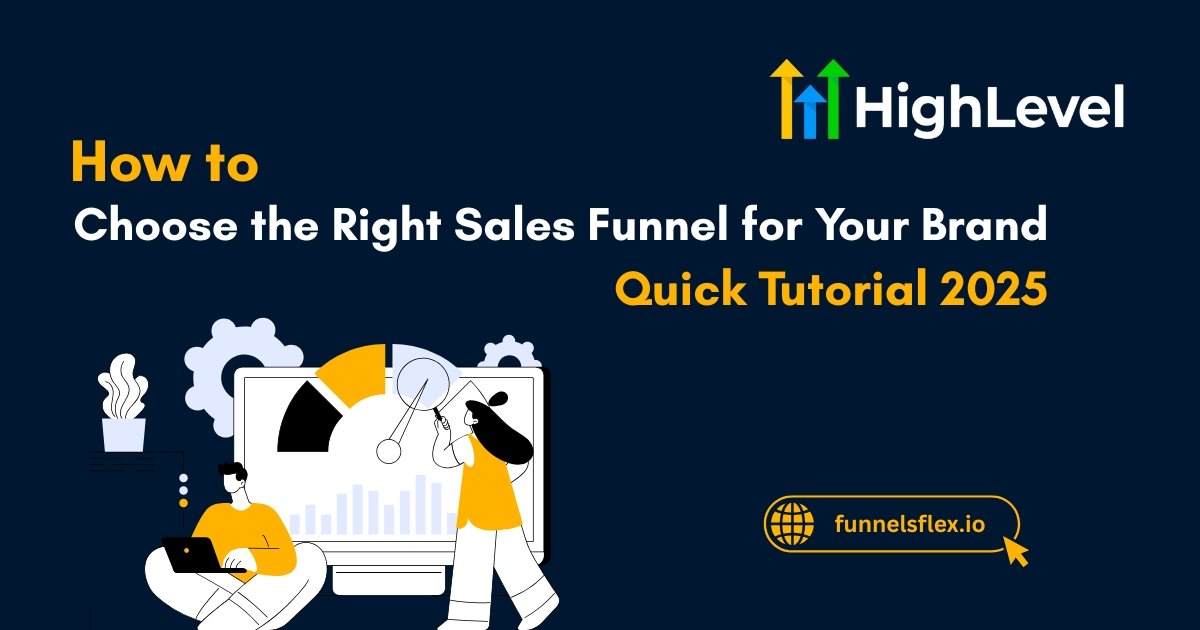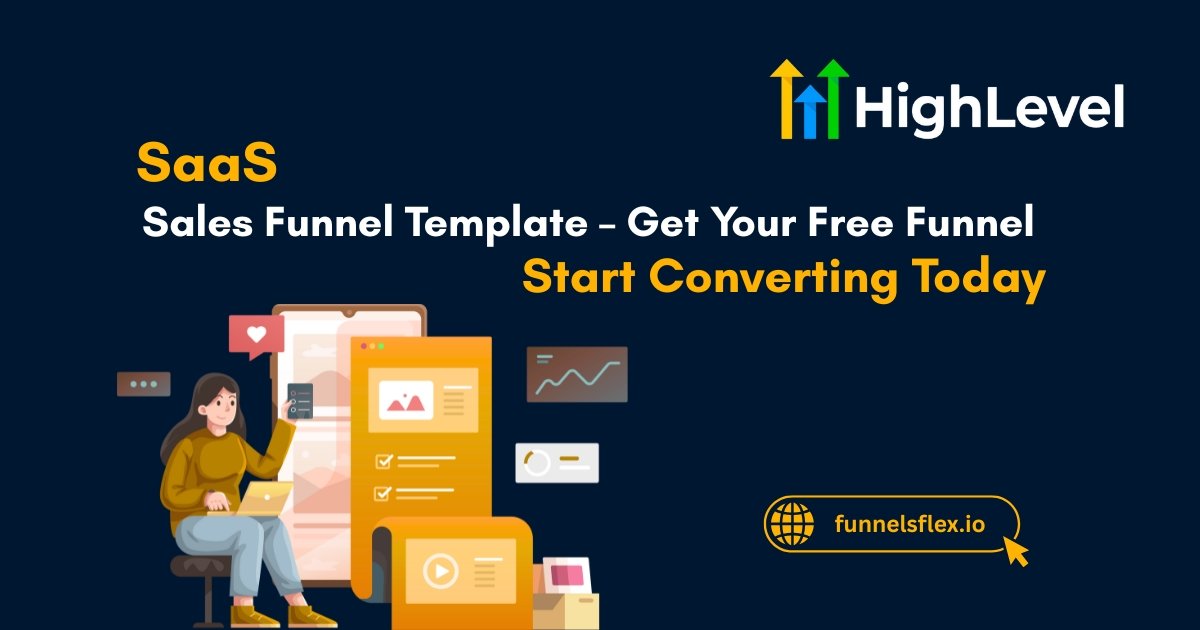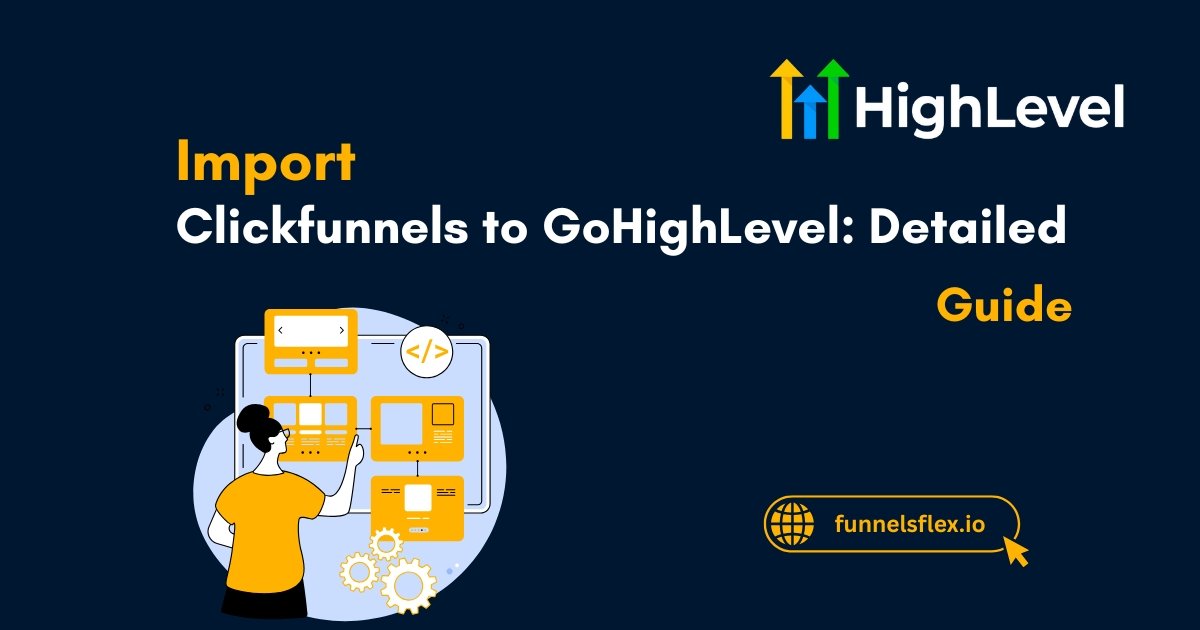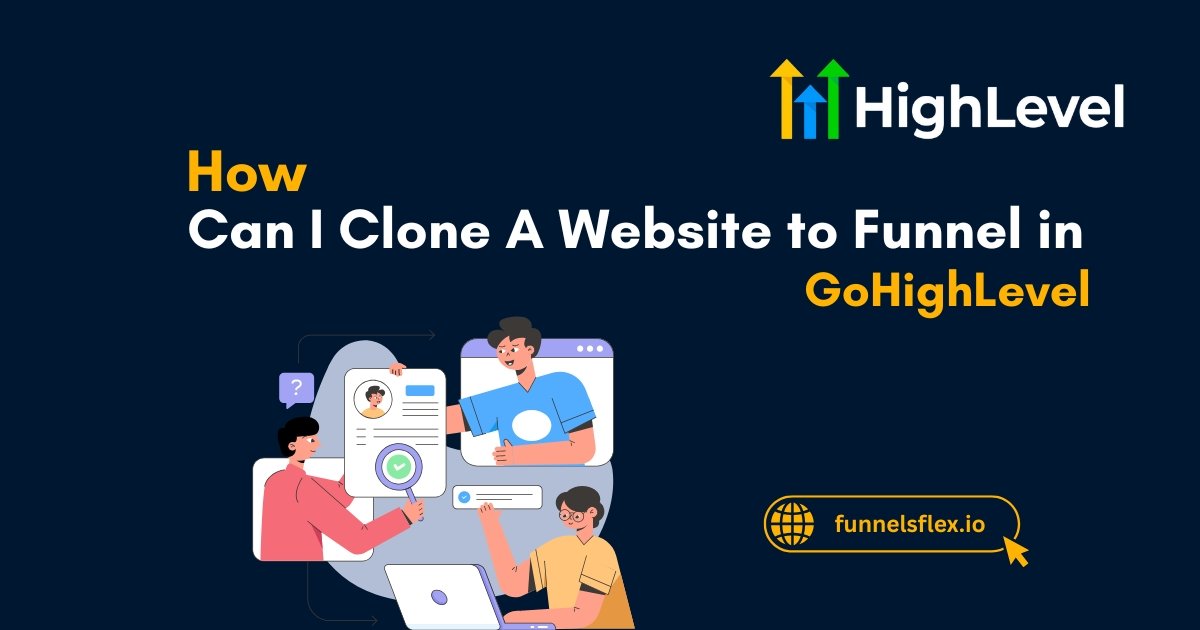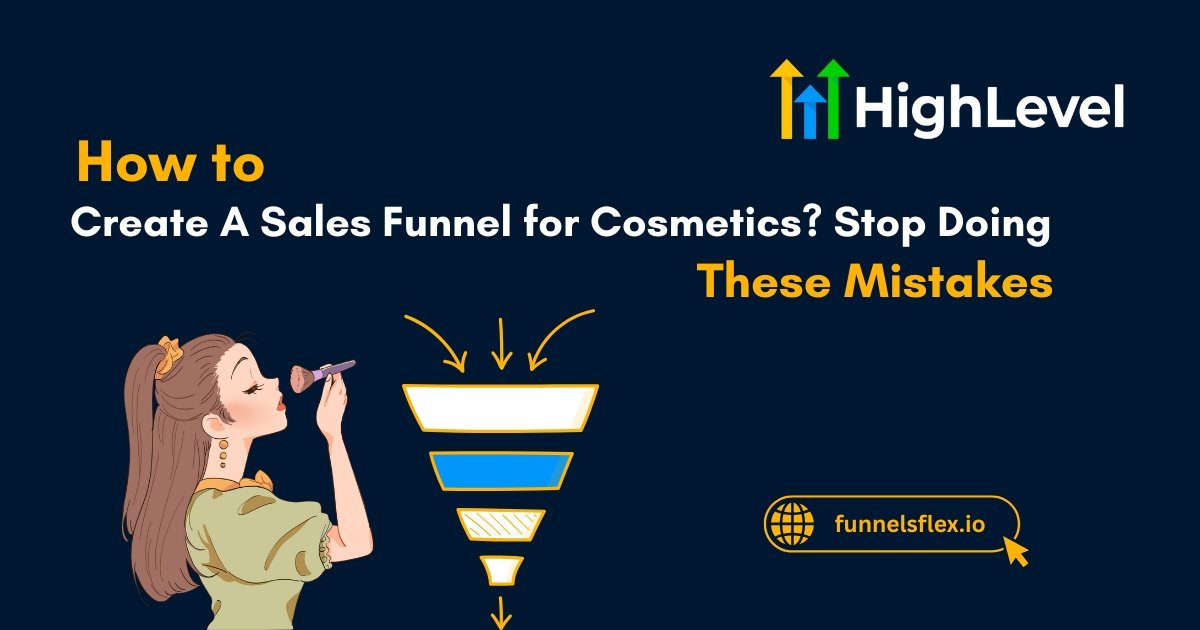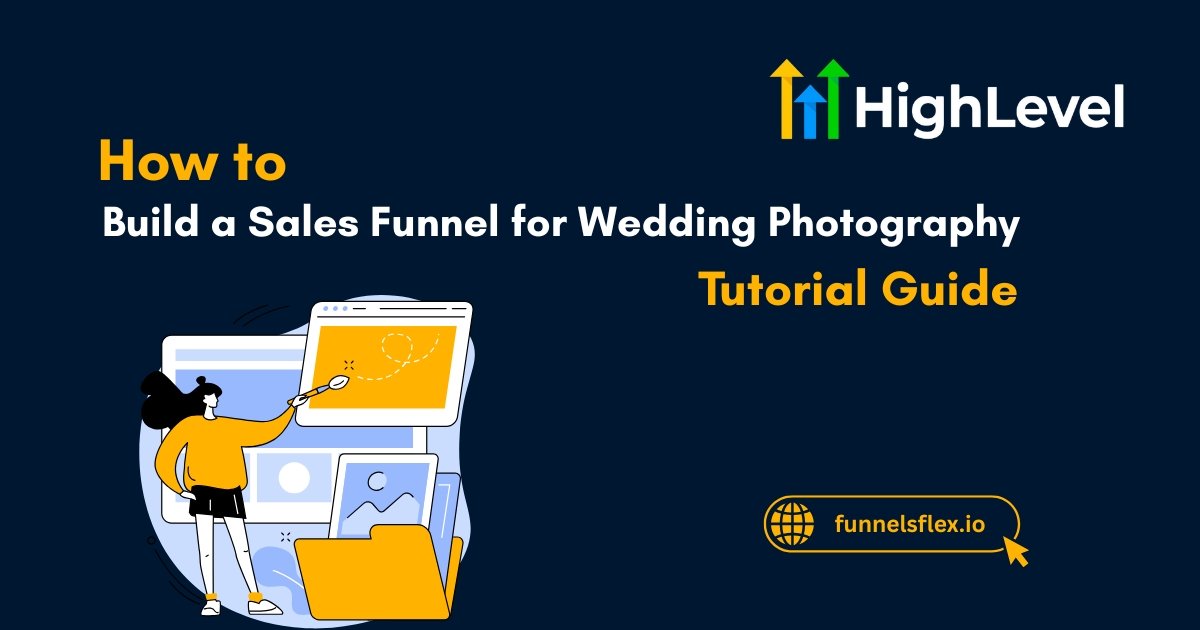How to Choose the Right Sales Funnel for Your Brand? Most Get This Wrong
Success in marketing rarely happens by accident. Behind every thriving brand lies a strategic funnel: engineered, refined, and aligned with how buyers think, not just how businesses sell.
Sales funnels are more than just digital pathways. They shape perception, guide behavior, and quietly influence decision-making at every stage. From the first click to the final conversion, each step matters.
This guide will unpack the most effective sales funnels, decode how they function, and help you match the right one to your brand, offer, and audience behavior.
Key Takeaways
The highest-converting funnels are not the prettiest; they are the most strategic. Use our niche-specific templates that actually encourage action.
What Is a Sales Funnel and Why It Matters
A sales funnel is not just a sequence. It is a system that organizes how potential buyers move from curiosity to commitment.
Instead of selling to everyone, a funnel narrows the focus. It speaks directly to the right audience at the right stage with the right message. That precision is what drives conversions consistently.
Funnels matter because they reduce friction. They prequalify leads, answer objections, and create clarity before a sales conversation even happens. Without one, even the best offers can fall flat.
The 4 Stages of an Effective Sales Funnel
Every high-performing sales funnel follows a natural flow. It mirrors how real people think, explore, evaluate, and decide. Miss one step, and conversions slip. Nail all four, and you create momentum.
Types of Sales Funnels and When to Use Each
Not all funnels serve the same purpose. Some are built to attract leads. Others are designed to close deals, upsell, or retain. Choosing the wrong one stalls your growth, no matter how great your offer is.

The right funnel meets your customer where they are. Emotionally, mentally, and financially. Here are the most common funnel types and when each one delivers the best results.
Lead Generation Funnel
This funnel captures interest early in the buying process. It usually offers something valuable for free in exchange for contact details. For instance a guide, quiz, checklist, or free trial.
Use it when:
It is simple, direct, and powerful when paired with Facebook ads or organic content. But it only does wonders when the lead magnet solves a real, specific problem.
Webinar Funnel
Webinar funnels are built to sell through education. They offer value upfront and create urgency by positioning the offer as the next logical step.
Use it when:
These funnels often include a registration page, confirmation email sequence, the live or recorded webinar, and a timed offer. Done right, they convert viewers into buyers by the end of the session.
Product Launch Funnel
Launch funnels build anticipation. They create buzz, release content in phases, and lead up to a specific launch window or limited-time offer.
Use it when:
These work well with countdown timers, teaser videos, waitlists, and layered email sequences. Timing and pacing are key; launch too soon, and it may cost momentum.
Tripwire Funnel
A tripwire funnel turns cold leads into customers by offering a low-cost, high-value product up front. Once someone buys, they enter a second stage where higher-ticket offers are introduced.
Use it when:
This funnel works well for e-commerce, info products, and digital tools. It filters out freebie seekers and creates a buyer-first list you can scale.
High-Ticket Sales Funnel
This funnel does not rush. It educates, qualifies, and leads to a call, consultation, or application. Instead of selling directly, it builds trust step by step.
Use it when:
The process often includes a VSL (video sales letter), case studies, application forms, and email nurture sequences.
79% of leads never make it to checkout because their funnel was not built to guide them. Explore our professionally-tested custom funnel templates that fix this problem – before your next campaign fails, too.
Pro Tip
Not all prospects think the same. Segment your leads early using quiz funnels, behavioral tags, or entry-point opt-ins. It can help adapt offers, emails, and copy so precisely that conversions feel personal.
How to Choose the Right Sales Funnel for Your Brand
Choosing a sales funnel is not just about design or platforms. It is about strategy. Each funnel plays a specific role, and your brand’s success depends on selecting one that mirrors your goals, product type, and how your audience makes decisions.
Too many brands default to copying what worked for someone else. But your funnel must reflect how your buyers think, behave, and convert.
Here is how to pick the right one without second-guessing every move.
Start With Your Offer Type and Price Point
Every funnel begins with what you are selling. A $29 ebook and a $3,000 consulting package will never follow the same path, and should not.
Low-cost, low-risk items (under $100) can be sold using simpler funnels: opt-in pages, direct sales pages, maybe a short nurture email.
Mid-tier offers ($100 to $1,000) require more context. These work best with funnels that warm leads like tripwires, email sequences, or VSLs.
High-ticket services or products need a deeper journey. This is where application funnels, webinars, and consultation play a pivotal role.
Consider the Awareness Level of Your Audience
If your audience already knows you and trusts your brand, your funnel can focus on urgency and exclusivity. But if you are targeting cold traffic, you need to start with education and value before asking.
Ask yourself:
The colder the audience, the longer the funnel should be. Think lead magnets, nurturing, social proof, and storytelling. The warmer the audience, the more direct and offer-focused your funnel can become.
Align With the Way You Sell
Do you sell online through landing pages? Use funnels that push for instant conversion: tripwires, low-ticket funnels, or limited-time offers.
Do you sell through personal conversations or demos? Use funnels that qualify. For example, application funnels, webinar sequences, or lead qualification forms.
Match Funnel Style to Your Strengths
If you are great on camera, record a webinar or VSL. If writing is your zone, a high-converting email funnel might be your powerhouse.
Your funnel should magnify your strengths, not pressure you into formats that drain your energy or feel forced.
The delivery method should never overshadow the message. Choose a format that lets your voice shine and connects naturally with your ideal customer.
Evaluate Traffic Sources and Buyer Intent
Where is your traffic coming from? Social media traffic is fast and fickle; they need easy wins. Use short-form funnels with strong hooks and low friction.
Organic or search-based traffic is more intentional. These visitors are already looking for solutions, so longer funnels like comparison guides, webinars, or detailed sales pages often perform better.
Keep It Simple, But Improve
You do not need a 15-step funnel to start. Begin with 3 to 5 core steps: opt-in, value, offer, follow-up, and CTA. Launch. Watch the data. Adjust based on what the numbers tell you, not guesswork.
Test headlines, buttons, video length, email subject lines. Funnels are not static. The right one is the one that evolves with your brand and your buyers.
Pro Tip
Your happiest buyers are also your best marketers. Add a low-barrier referral option, for example, a one-click share link or exclusive bonus for customers who spread the word.
Common Funnel Mistakes to Avoid
Building a sales funnel is exciting. But excitement often leads to errors that can quietly kill conversions. Some mistakes are obvious. Others hide in plain sight, costing you leads, trust, and revenue without raising red flags.
Overloading with Steps That Confuse Instead of Convert
Funnels are meant to guide—not exhaust. When you throw too many steps, pages, upsells, videos, and offers at your audience, they do not feel led – they feel lost.
Complexity does not build confidence. It creates friction. And friction leads to drop-off.
Stick to one clear path. Remove unnecessary steps. Keep your user focused on the next simple action, not all possible options.
Speaking to Everyone & Using Generic Messages
Trying to appeal to every visitor usually backfires. Generic messaging makes your funnel invisible. No urgency. No edge. No conversions.
Be specific. Write like you are speaking to one person: your ideal buyer. Know their fears, goals, objections, and desires. Speak their language.
Relying Too Much on Templates without Customization
Templates save time, but copying them word-for-word without adapting to your brand voice and audience is a mistake. People connect with brands that feel authentic, not generic.
Use templates as a foundation, not a crutch. Swap out filler copy. Rewrite sections to match your tone and value proposition.
Ignoring Follow-Up Sequences
The funnel does not end at the thank-you page. Many potential buyers need time, reminders, and reassurance. If you are not nurturing leads after the initial touchpoint, you are missing a massive opportunity.
Set up email sequences that educate, entertain, and convert. Keep the conversation going beyond the first click.
Are leads slipping through your funnel like water through cracks? Shop our custom funnel templates that guide every visitor toward the finish line – without costly drop-offs.


